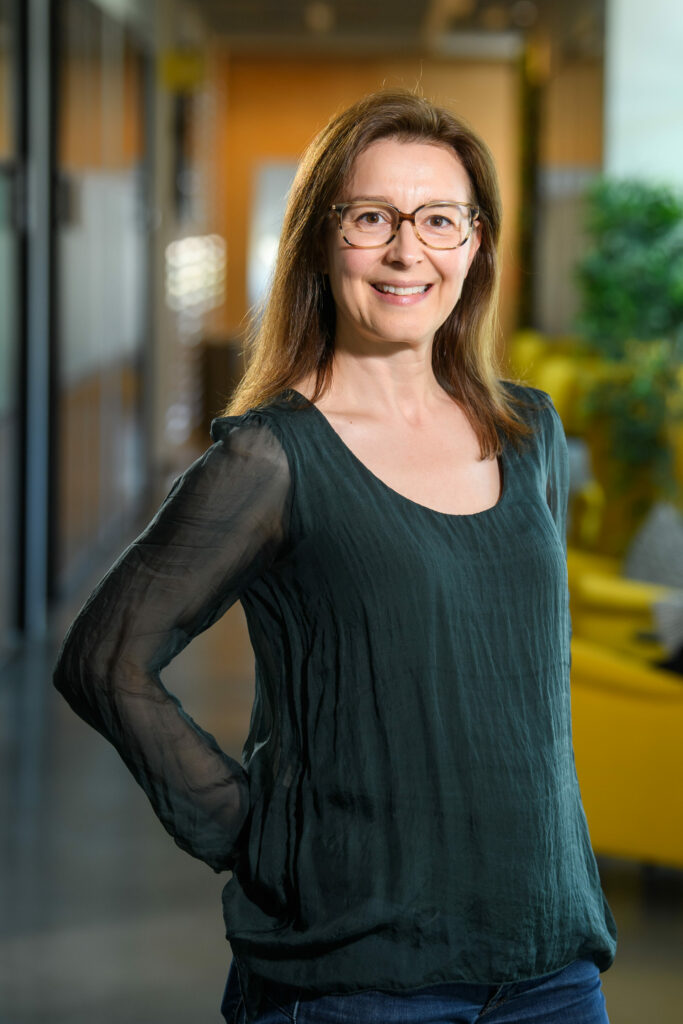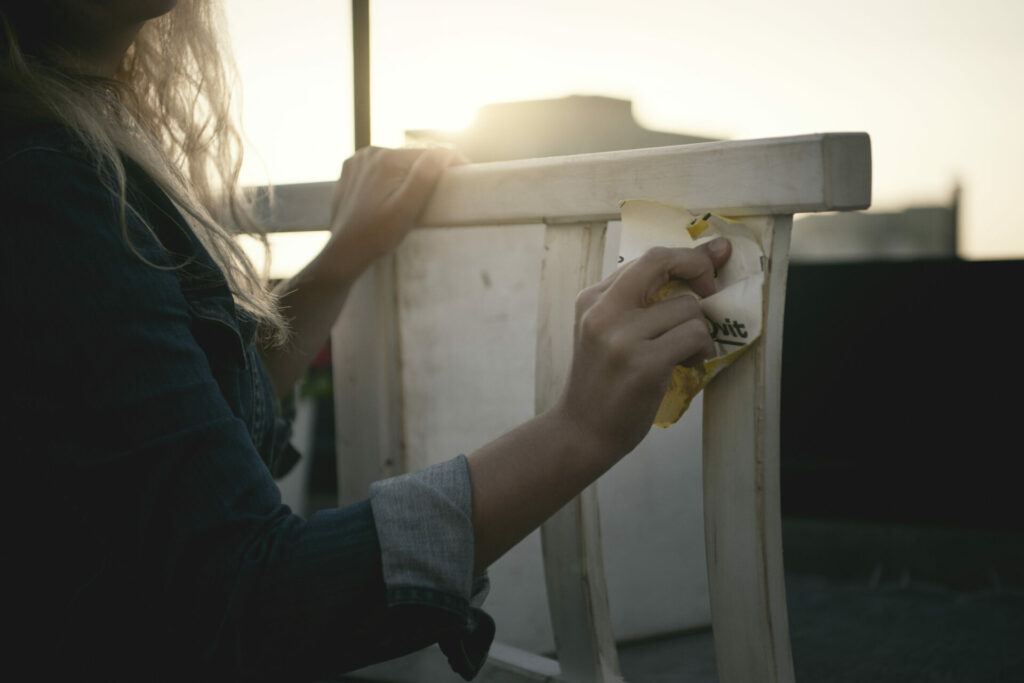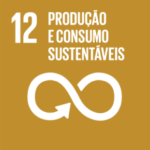The motto is sustainability and this theme could be used for various news stories, interviews and reports. IKEA has long been more than just the place to go for affordable furniture and decoration solutions. It is also an example to look up to when it comes to the circular economy.
They only use energy from renewable sources, they invest in a second life for materials, they have gender equality in management positions and there is no pay gap for men and women in the same job.
We spoke to Ana Barbosa, Sustainability Manager at IKEA Portugal, in a conversation that recalls the company’s early days in Portugal — and how sustainability was already a prerequisite for its integration in our country — and that doesn’t end without listing what still needs to be done, with the ambition of reducing the impact of mobility and promoting circular services.
1. IKEA was born in 1943, at a time when sustainability was not yet a major issue for companies. How did this path begin?
Sustainability is part of IKEA’s culture and an integral part of our values. At IKEA there has always been a great awareness of resources and the ambition to do more with less. From the use and reuse of materials to our flat packaging, there are many examples at IKEA where sustainability has been integrated into our value chain, even when it didn’t yet exist as a concept. On the other hand, there is a great connection between sustainability and our vision of creating a better everyday life for most people.
It makes sense for us to broaden this vision and consider the planet as the home of all people and, in this way, it becomes very natural to integrate a sustainability strategy into our business plan, covering the entire value chain, with the aim of having a positive impact on people and the planet at the same time as developing the business.
In today’s world, that means transforming our business and optimizing the value chain to reduce greenhouse gas emissions, offer solutions for a more sustainable life at home for our customers and positively impact the people we touch in our value chain.
This can be seen, for example, in initiatives to reduce the CO2 footprint of store operations; also in the incorporation of renewable or recycled raw materials into our range; the development of products that are more efficient in terms of water or electricity consumption; or initiatives to promote the circular economy, aimed at extending the life of products and reducing waste.
Without forgetting people, who are an integral part of the sustainability triangle, we have been working for more than 20 years with our code of conduct with suppliers, to guarantee the conditions and rights of workers as well as environmental preservation. And with our employees, we also work a lot on Equality, Diversity and Inclusion.
2. When you set up in Portugal, was this concern taken into account from the start? What were the first steps?
Sustainability is in IKEA’s DNA, as I said, and integrated into the business, including new markets, stores, and points of contact. And Portugal was no exception.
Naturally, our sustainability strategy, initiatives and objectives are more concrete and ambitious today than they were 20 years ago. However, some of the practices we have today have always been part of our expansion plans. Such as energy efficiency or water saving solutions. And even our Circular Area, where we work every day to avoid waste by selling used products, has been part of our concept for many years — previously it was called the Opportunities section.
Today, looking at what has already been done in Portugal in the area of sustainability, I would say that we really are an exemplary country in the IKEA world in this area. We don’t employ fossil fuels in our day-to-day operations, the electricity we use is 100% renewable, with around 20% produced from self-consumption in our photovoltaic panels. We have a wind farm in Pisco that produces energy for around 30 IKEA stores. And we now make more than half of our deliveries in electric vehicles.
It has been a solid transition to renewable energy, which translates into a reduction in CO2 emissions. And we will continue to do so.
3. You could just focus on selling furniture and continue an already successful brand. I’d like to know why you have sustainability as a pillar of your company.
We believe very clearly that the growth of the business must happen at the same time as we have a positive impact on people and the environment. This keeps us true to our vision of creating a better life for the majority of people, seeking solutions that meet the needs of our customers today, without compromising future generations.
At the same time, in addition to aligning with our vision and culture, integrating sustainability into the business will soon be, if not already, an imperative. To secure the value chain from the point of view of cost and product availability, mitigate the risks of extreme weather events, attract and retain talent, and maintain customer confidence. Not to mention compliance with legal requirements.
There is also the fantastic opportunity that sustainability brings, such as profitable investments, savings and standing out from the competition. These are all competitive advantages.
That’s why sustainability is strategically integrated into all dimensions of the business, with ambitious targets for reducing the carbon footprint (in absolute values), including the transformation into a circular business with a positive impact on people.
In our business we also have the opportunity to present solutions to our customers that allow them to have more sustainable habits, saving on water and electricity consumption, avoiding waste or disposables. This multiplies our impact.
It’s good business to be good business.

4. Is this work also done to respond to an increasingly demanding public? How do you notice this demand?
IKEA’s commitment to sustainability aims, in addition to offering more accessible, functional and sustainable solutions and services, is to inspire customers to adopt more sustainable behaviors inside and outside the home. Our studies show that the Portuguese consumers are more aware and concerned about climate change (as well as social and ethical), and are willing to adopt better habits at home. Although people are increasingly interested in reducing their impact on the planet, many don’t know how to do it. And they have high expectations of brands to assume their share of responsibility and provide solutions.
In order to facilitate this process, we focus on a few key aspects: saving energy and water; reducing waste, particularly of food and disposables; and extending the life of the products we already have, through care and maintenance, customization or buying and selling second-hand.
5. We’re also talking about sustainability on the social side. How do you work in this area?
At IKEA we address social sustainability through various initiatives.
Our ambition is to have a positive impact on the people we touch in our value chain.
Starting with our employees, where we work in the areas of Equality, Diversity and Inclusion, as I mentioned. For several years now, we have had gender equality in management positions and there is no pay gap between men and women in the same job. And where we have been working every year to increase the minimum wage, so that there is fair pay for all employees.
We also work on the value chain, as I mentioned, such as our IWAY code of conduct.
And finally, we support vulnerable groups in local communities, whether in emergency situations or in ongoing projects. It’s a partnership with local entities, namely our social partners, and it mostly involves creating or supporting the creation of safe and dignified homes, whether they are the homes themselves, temporary shelters, or “second homes” such as day care or activity centers. The most important thing is that everyone has the right to a decent and safe home, especially the most vulnerable.
6. We know that they rely on the community to push for some changes. Can you tell me some of your customers’ main concerns and how you’ve responded to them?
As I mentioned, our studies show that the Portuguese are aware of and concerned about climate change, and are willing to adopt better habits at home. Although many don’t know how to do it. And they have high expectations of brands to assume their share of responsibility and provide solutions.
Some of the areas that are most interesting or in which there are the most demands are related to savings in the home, particularly in electricity, which raw materials and the use of recycled raw materials, as well as the possibility of buying and selling second-hand.
At IKEA we respond to this last need through initiatives such as the “2nd Life” service, the offer of spare parts and hardware to replace our products and the availability of second-hand products in the circular area of the stores.

7. What are the biggest challenges in transforming a company’s linear-based system into something circular?
The big challenge is the concept itself, i.e. closing the cycle of materials, since our society and infrastructures will have to be rethought.
Our approach is multiple, starting with product design, which must incorporate circular principles, through to raw materials, but also multiple functionality, durability designed to last several lifetimes and recyclability.
From the point of view of raw materials, our ambition is to use only renewable or recycled raw materials in our products by 2030, which will be a huge step forward in this area.
The circular services I mentioned above, and others yet to be implemented, are also part of this equation.
And finally we work on the efficiency of operations, minimizing waste and maximizing recycling.
We remain focused on our goal of being a circular business, regenerating resources and having a positive impact on the climate, while growing IKEA’s business.
8. What are your short- and long-term challenges?
The major challenges we are working on include reducing the impact of mobility (“last mile”, employees and customers) and promoting circular services, among others.
9. What sustainable changes is IKEA advocating that are not so visible to the customer?
In addition to the employee and social impact issues mentioned above, which are generally less known by consumers.
Here are some of the initiatives that IKEA has been putting into practice:
. In 2015, we began the transition to LED lighting, which is now 100% complete, meaning that we only use this type of technology in our spaces;
. Use of “Solar tubes” — a natural lighting system using reflectors, which allows sunlight into most of the stores and warehouses;
. Use of sensors to manage areas without the need for permanent lighting;
. Inflatable dock shelters, the inflatable system installed at vehicle entrances to unloading docks to prevent heat or cold loss;
. Implementation of intelligent building management systems in our stores, which optimize consumption, particularly in the area of air conditioning.
. We only use energy from renewable sources in our operations.
. More than half of our parcel deliveries to customers’ homes are made using electric vehicles.
. Almost 90% of waste is sent for recycling.
. We have a permanent Second Life service.
. We have a growing range of products that contribute to a more sustainable everyday life at home.
. Implementation of photovoltaic panels for self-consumption, thus reducing grid consumption and producing renewable energy.
10. You’ve been in charge of sustainability at IKEA’s Portuguese branch since 2017. Can you name the most memorable moment of this six-year journey?
It’s hard to choose just one moment, because I’ve had years full of actions and results at IKEA.
I would like to highlight the milestone of our fiscal year 2019, the first year in which we have reduced our CO2 footprint in absolute terms and across the entire IKEA value chain, demonstrating that it is possible to decouple business growth from growth in greenhouse gas emissions. A trend we’ll continue.
But also at IKEA Portugal, in 2022, when the last gas-powered equipment was removed, we celebrated the milestone of not using fossil fuels in our daily operations.
Perhaps the closest moment to my heart was the support given to children from vulnerable families, following the COVID-19 pandemic, who we have supported with donations of desks, lamps and toys, to make studying and spending time in lockdown easier. We collaborated with 80 social partners and supported 10,000 children. We also had the opportunity to distribute some of the furniture and toys ourselves. And those children’s smiles are impossible to forget.

Marta Cerqueira is from Minho and vegetarian. Luckily, she lives in Lisbon, where there is more tofu than sarrabulho. She has been a journalist for over 15 years, the last of which writing about food and sustainability. Now, out of the newsroom, she continues to write whenever she can, be it in magazines, journals, post its, or on her Instagram page, which she uses to share a life divided between being a mom-person-foodie-traveler. Still, she created Peggada so she could write about what doesn't fit in a magazine, journal, post it or Instagram: a better world.
Related articles
Sustainable Development Goals 🍃

This article promotes an action that encourages the reduction of waste generation through prevention, reduction, recycling, and reuse.
➡️ To discover more businesses that are aligned with Sustainable Development Goal 12 “Sustainable Production and Consumption” click here.
➡️ For news, tips and interviews about this topic, click here
➡️ Want to know more about the 17 United Nations Sustainable Development Goals? Click here
Esta publicação também está disponível em:
![]() Português (Portuguese (Portugal))
Português (Portuguese (Portugal))




